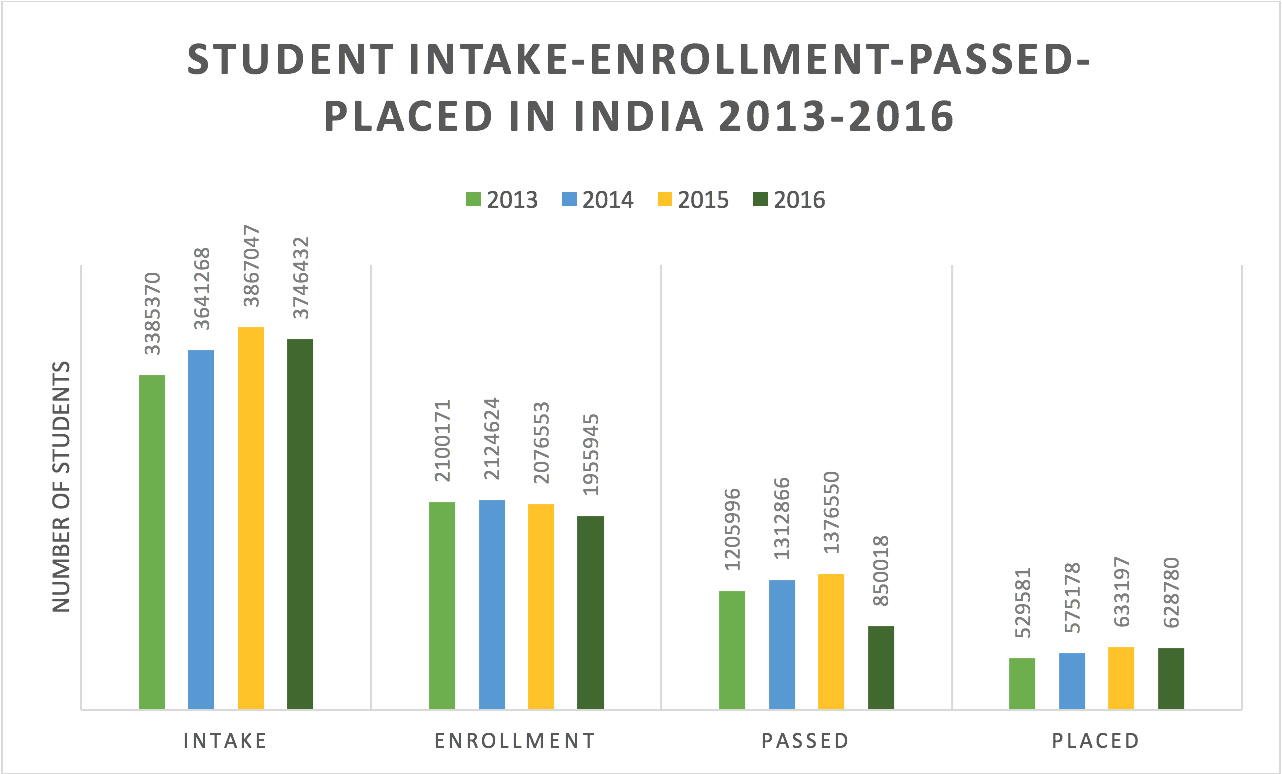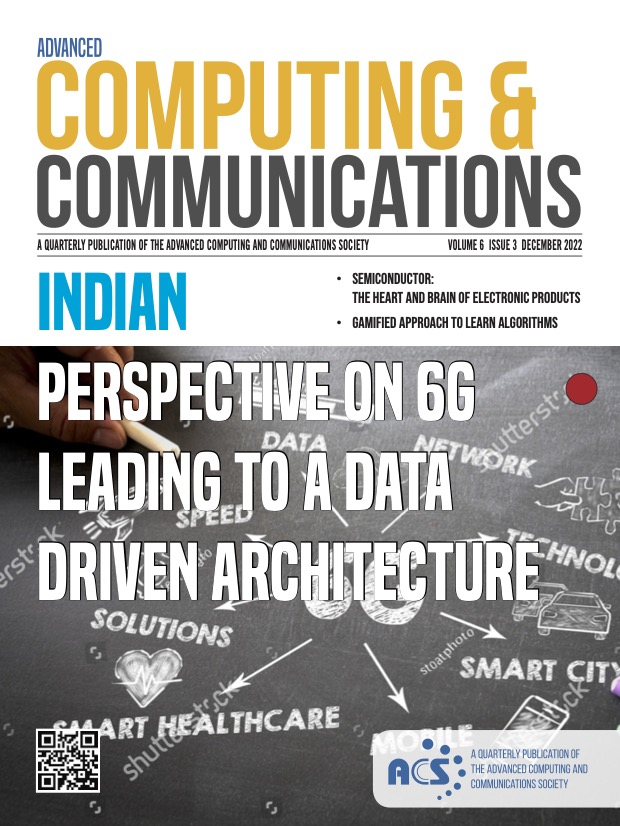The scenarios above contrast two distinct aspects of knowledge – theory and practice. These two aspects complement each other, each enhancing our ability to uncover, ingest and assimilate the knowledge contained in the other. Often, in our lives, we notice how practical experience overshadows theoretical knowledge. However, theory and practice are each as important to our learning process as our two hands. The theory explains ‘why’, while the practical experience shows us ‘how’. The practical aspect of learning enables us to put theories to work and to test them.
Today’s education system provides students with loads of information: facts and textual knowledge of the world around them, curated for memorizing and later regurgitation during an exam. The lack of practical experience renders most graduating students unprepared for industry, while also preventing the nurturing and development of a student’s innate abilities and creativity. This can have a negative impact on society, whose students are its future.
We remember 10% of what we read, 20% of what we hear, 30% of what we see, 50% of what we see and hear, 70% of what we discuss with others, 80% of what we personally experience and 95% of what we teach others. Edgar Dale, ‘The Cone of Experience’ (1969)
Students are the Casualty
The typical student is preoccupied with classroom lectures, labs, projects and examinations. Whereas labs and projects are more likely than lectures and exams to provide the practical experience required for industry preparedness, they are much less emphasized in the grading mechanisms that educational systems practice. This approach to grading is not by accident, but the result of the clever use of grading mechanisms that double as means to rank and consequently eliminate rather than encourage students on the path of self-growth and career development, often leaving them psychologically deeply hurt. Another classic student predicament is the use of outdated material in the classes and labs they take. Changing or creating new material for classes and labs to keep pace with advances in technology is an ongoing challenge both for academics and universities for numerous reasons, one of which is the time and effort they must invest in securing research grants, not to mention the inertia on the part of some academics in updating materials by and by with incremental advances in technology. The combined outcome of these situations is the students’ difficulty in assimilating and putting the knowledge they have received to practical use and, consequently, in securing their first job. This is the classic skills gap, the inevitable casualty of which are students who are left wondering where things went wrong.
Industry May Consider Realigning Itself with Students
To make matters worse, industry adds to students’ existing woes. Corporate hiring departments typically try to reach out to top talent that they think is not only industry-ready, but also perceived as a good fit, likely to accept a job offer and continue with the organization for an appreciable length of time. The whole interview and induction process, including getting a candidate up to speed, typically involves huge investments of time and resources with outcomes that cannot be predetermined. Furthermore, in today’s competitive global landscape there is no telling how long a candidate will remain with the organization.
Industry could, with innovative thinking, do a lot more with students directly, in scalable ways, to prepare them for industry. Spending both time and money on a student design challenge or contest (SDC) can, if done properly, provide industry not only with a solution to help overcome the hiring challenges mentioned above, but also benefit corporate hiring budgets. Imagine using students as a relatively inexpensive resource to obtain a proof-of-concept for a new and interesting idea. By spending an hour or two every couple of weeks on guiding SDC participants and by nudging them along a direction by providing them with a broad and interesting theme, industry can both get what it wants – work on new ideas, which otherwise is very expensive – and what it needs – individual students/potential employees themselves, who industry is able to get to know much better through such regular interaction than through a quick round of interviewing.
The Skills Gap in India (2013 – 2016)
Here is an interesting look at how students in India have performed after graduation over the last three years. Figure 1. indicates that, on average, less than 30% of enrolled students end up with placements in industry, clearly pointing to the existence of the skills gap. While both industry and academia can do much better and more, government is equally, if not, more responsible for the skills gap by continuously pursuing policies that have, for decades, not enabled entrepreneurship to come to the fore and grow the economy to be able to realize the economy’s full potential, indirectly, in turn, affecting academia and leading to the lack-luster situations there. The role of government should have been one of administration than running industry itself, pursuing policies fostering mutual trust between government and industry with minimum regulation and low taxes, and promoting a level-playing environment in which entrepreneurship is rewarded and industry (both SMEs and large corporations) thrives and grows itself, sustainably, creating more jobs, thereby benefitting society economically as well as technologically.

Figure 1. Student Intake v/s Enrollment/Passed/Placed in India 2013-2016
(DATA SOURCE: AICTE WEBSITE http://www.aicte-india.org/dashboard/pages/graphs.php
Now is a perfect time for a clarion call for all the stakeholders involved – students, academics, industrialists, and those in government – to wake up and shape a better tomorrow by empowering today’s students for tomorrow’s technology. The onus is on each of the stakeholders to take steps in the right direction. Recognizing the challenge presented both by the skills gap and the paucity of jobs, the Government of India has put in significant efforts especially by easing up the processes for setting up an industry and by setting up a dedicated Ministry of Skill Development and Entrepreneurship to promote skill development and vocational training.
The ARM University Program
Education must provide students with a better understanding of fundamental concepts and enable them to apply these concepts to developing solutions for society. To this goal, the ARM University Worldwide Education Program enables the use of ARM technology in a university curriculum by making its flagship product of Education Kits available free of charge to academics worldwide. An Education Kit, centered around a core area of Electrical/Electronics and Computer Engineering, Electronics and Communication Engineering or Computer Science, consists of (i) a complete suite of course materials including lecture slides, notes, exercises, labs and solutions, (ii) seed hardware for enhancing the hands-on experience, and (iii) the professional version of the industry-standard KEIL MDK software development tool.
The ACCS – ARM Annual Student Design Challenge
Another major initiative has been the ARM University Program’s collaboration with the Advanced Computing and Communications Society (ACCS) to design and develop the annual ACCS – ARM Student Design Challenge. The Challenge was launched in 2014 as a platform to give students the experience of solving industry problems first-hand, and to help them put the skills and the knowledge acquired in a university to the test.
The Challenge presents an opportunity for ARM’s numerous industry partners to participate in work on new ideas and projects that might otherwise be impossible owing to time and financial constraints. Also, through this Challenge, partners can seek to attract and use top student talent to work for them. From a corporate hiring perspective, the Challenge allows industry engineering teams to work closely with individual students, giving them a chance to get to know them beyond their technical capabilities, which is impossible in a traditional interview-based hiring process.
This annual Challenge has evolved each year since 2014. Despite annual refinements and improvements there is a definite structure to it, starting with the call for proposals that goes out at the beginning of the new academic year in early August. Shortlisted student teams are then invited to present their proposals at the annual International Conference on Advanced Computing and Communications (ADCOM) in September. Student teams who make it through this initial round are then tasked with creating a working prototype or proof-of-concept. These teams are mentored and guided by a team of industry experts and academic scholars over a period of four to five months. The teams who get through to the finals, normally held towards the end of the academic year in March, are awarded cash prizes by the organizers and rewarded with placements in industry by partners. This is a win-win proposition both for students as well as industry partners. The 2016 Challenge on Smart Transport Systems, for instance, not only resulted in the winning student teams being offered internships by TVS Motors, a sponsoring partner, but also in student-generated ideas being adopted by TVS Motors.
As a tested avenue for a win-win- engagement between industry, academia and society, we look forward to seeing many such initiatives that work hand in hand to mold a better tomorrow by empowering today's students for tomorrow's technology.



